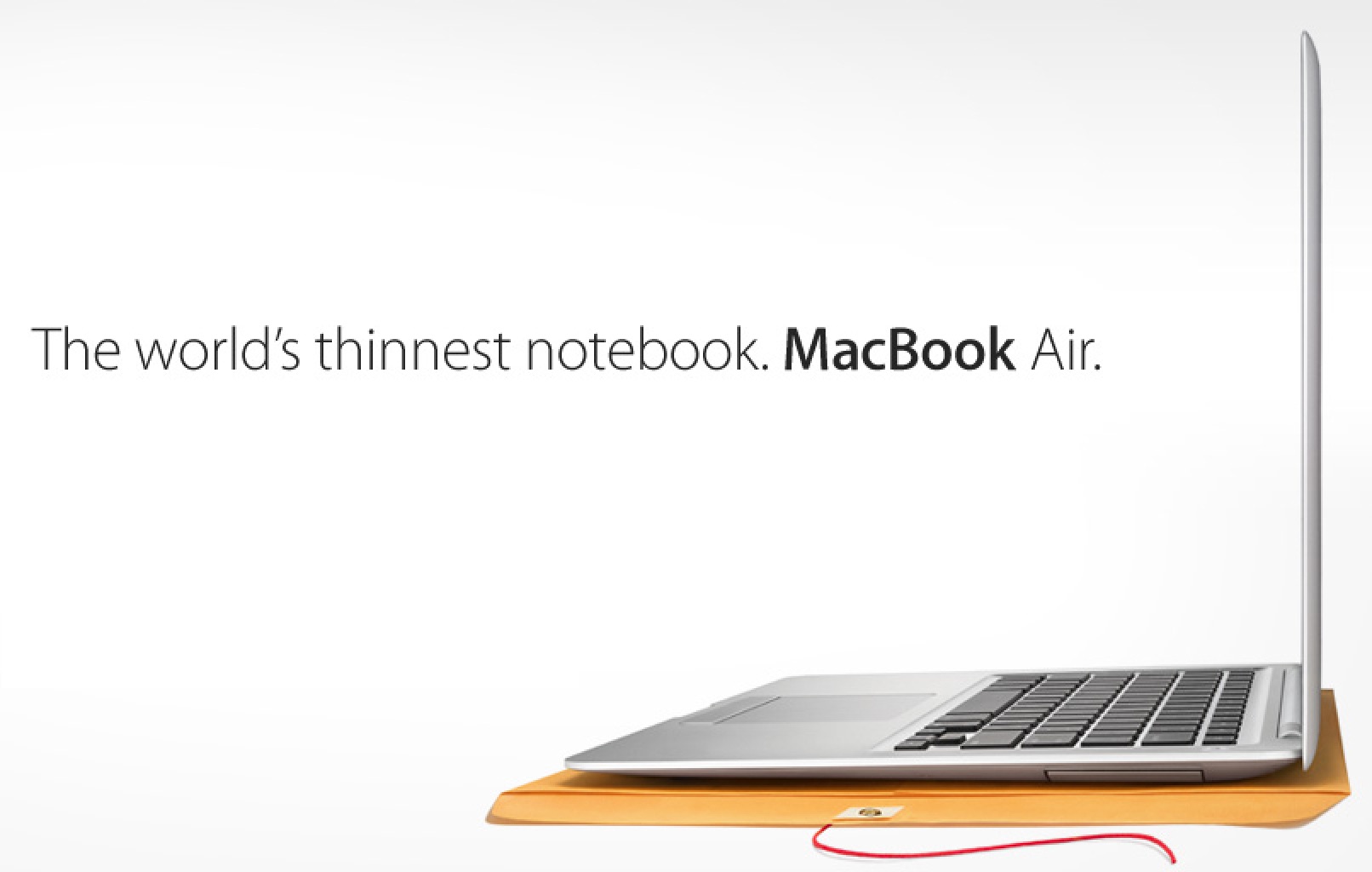 January 15, 2008: Steve Jobs shows off the first MacBook Air at the Macworld conference in San Francisco, calling the revolutionary computer the “world’s thinnest notebook.”
January 15, 2008: Steve Jobs shows off the first MacBook Air at the Macworld conference in San Francisco, calling the revolutionary computer the “world’s thinnest notebook.”
The 13.3-inch laptop measures only 0.76 inches at its thickest point and 0.16 inches at its tapered thinnest. It also boasts a unibody aluminum design, thanks to an Apple engineering breakthrough that allows the crafting of a complicated computer case from a single block of finely machined metal.
In a brilliant piece of showmanship during the MacBook Air launch, Jobs pulls the super-slim laptop out of a standard interoffice envelope. (You can watch his keynote introducing the MacBook Air below).
First MacBook Air: World’s thinnest laptop?
“We’ve built the world’s thinnest notebook — without sacrificing a full-size keyboard or a full-size 13-inch display,” said Jobs in a press release announcing the MacBook Air launch. “When you first see MacBook Air, it’s hard to believe it’s a high-performance notebook with a full-size keyboard and display. But it is.”
Whether the first MacBook Air genuinely was the thinnest laptop of its age was open to argument. The 2003 Sharp Actius MM10 Muramasas, for instance, measured thinner in some places than the MacBook Air, but thicker at its minimum point.
One thing nobody could argue with: In one fell swoop, Apple changed the game with the MacBook Air’s design.
For an illustration, compare the 3-pound MacBook Air with the much bulkier 4.4-pound PowerBook 2400c laptop hailed as Apple’s lightest laptop just a decade earlier. The MacBook Air was just an extraordinary piece of engineering.
Unibody aluminum design becomes Apple’s go-to
The unibody manufacturing process essentially reversed the way Apple built its laptops. Instead of layering multiple sheets of metal, the process let Apple start with a solid block of aluminum. Then, material was removed from the slab until only a single finished piece remained — a literal “unibody.”
The design proved so successful that it migrated to the MacBook, and then on to the larger iMac. The days of Apple’s use of plastic as a primary material (with the exception of the later iPhone 5c) had come to an end.
For Apple, the future was aluminum.
First MacBook Air: Size over specs
Apple designed the MacBook Air to appeal to less power-focused customers. With only one USB port and no built-in optical drive, the ultraportable laptop was intended for people who wanted minimum weight and maximum screen size. It delivered “up to five hours of battery life for wireless productivity,” according to Apple.
Jobs pitched the product as a truly wireless machine — it lacked both Ethernet and FireWire. Apple designed the MacBook Air to appeal to those whose on-the-go lifestyles meant heavier reliance on Wi-Fi than on wired connectivity. The computer’s AirPort Extreme 802.11n Wi-Fi networking delivered “up to five times the performance and twice the range of 802.11g,” Apple said.
Original MacBook Air specs
The featherweight laptop boasted a 1.6GHz Intel Core 2 Duo processor. And it packed 2GB of 667MHz DDR2 RAM and an 80GB hard drive. It also came with an iSight camera and microphone, an LED-backlit display that adapted to the brightness of the room, and the same full-size keyboard found in other MacBooks. Prices started at $1,799.
A decade and a half later, the MacBook Air lives on. The latest models, powered by Apple’s proprietary M2 chip, abandon the original’s classic wedge shape. The new design looks “strikingly thin from every angle,” according to the company.
“Completely redesigned around M2, MacBook Air is thinner, lighter, and faster with a bigger display, better camera, and all-day battery life, in four beautiful finishes,” said Greg Joswiak, Apple’s senior vice president of worldwide marketing, in a June 2022 press release announcing the new laptops.
Apple released its first 15-inch MacBook Air, also powered by the M2 chip, in June 2023.
Do you remember the very first MacBook Air launch? Let us know in the comments below.


